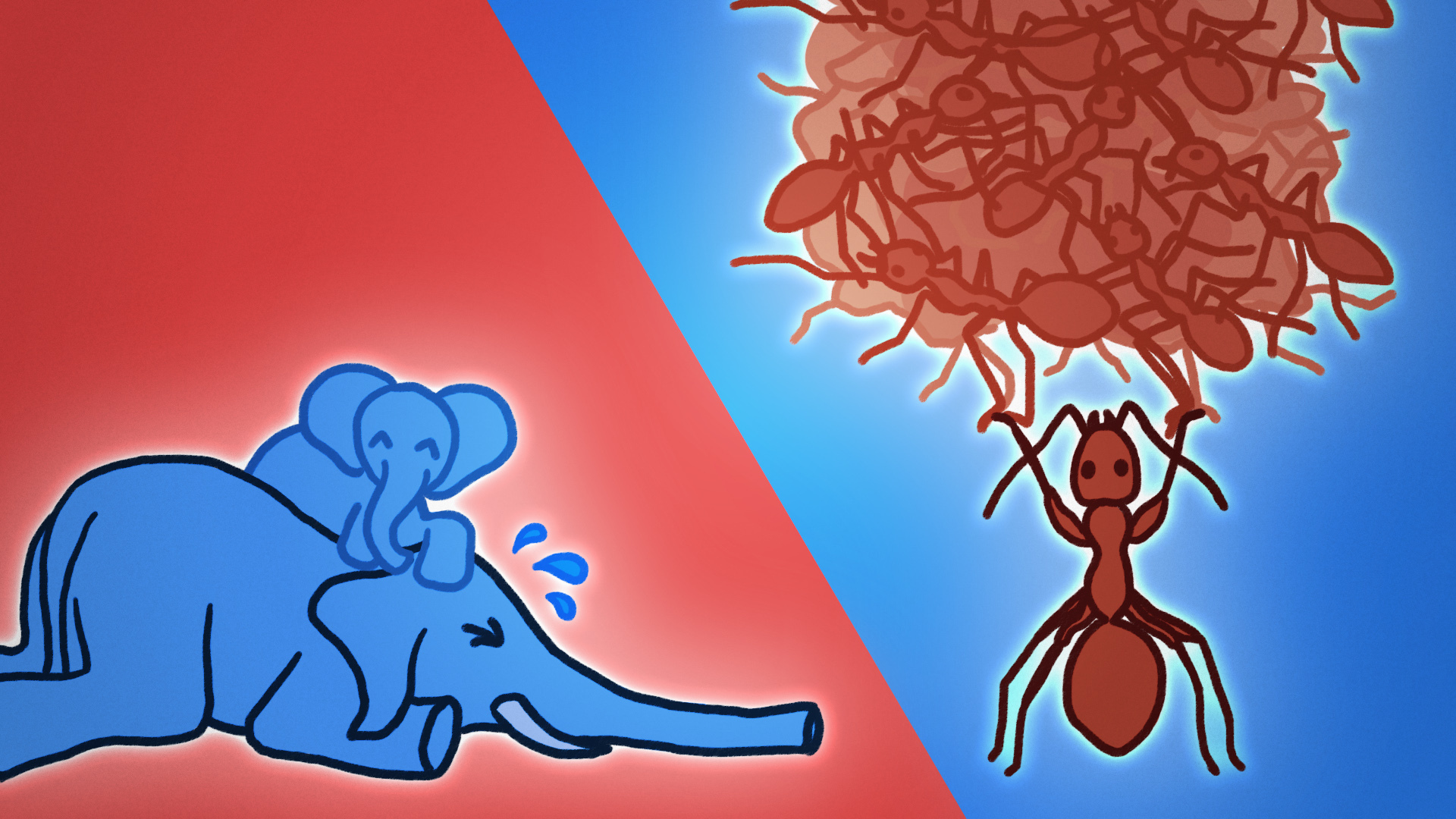

PopSci and MinuteEarth collaborated on this story and video. If this gets you pumped for more strength-related stories, check out PopSci’s summer 2023 issue all about muscle.
In the animal kingdom, size doesn’t always equate to strength. While large animals such as elephants and oxen can move massive objects without breaking a sweat, pound for pound, insects exhibit nature’s greatest feats of strength.
The 1-and-a-quarter-inch dung beetle, nature’s strongest creature relative to its size, can move balls of poop 1,141 times their own body weight. If you were that strong, you could deadlift a space shuttle. Meanwhile, the largest animal on land, a male African elephant, can lift around 1,300 pounds—impressive to us, but only around 10 percent of its body weight.
African elephants are “actually pretty weak” relative to their weight, says Andrew Schulz, an animal biomechanics researcher at the Max Planck Institute for Intelligent Systems in Germany. While elephants are much stronger than the average human—their trunks alone can lift 700-pound objects—the pachyderms’ size actually hinders their strength.

This is due to a mathematical principle called the square-cube law. Astronomer and physicist Galileo Galilei came up with the idea 400 years ago, which states that, as a shape expands, its volume grows faster than its surface area. For example, if a human doubled in height, they would experience an eightfold increase in mass.
[Related: You should start eating bugs. Here’s how.]
The square-cube law helps explain why large animals are often weaker than small ones, relative to their weight. Simply put, animals greatly increase in mass as they increase in size, and more of their strength must be devoted to supporting their bulk. Because of this, making an elephant 10 times as big wouldn’t make it 10 times as strong.
Even humans obey this principle in action. Take a look at professional athletes: In general, athletes who weigh less can run faster and do pull-ups more easily than those who are heavier, because the smaller competitors have to devote less of their strength to supporting their mass.
Being light on your feet, however, isn’t the secret to insect-like super strength. So how do leafcutter ants, which can carry pieces of leaves 50 times their own weight, or Rhinoceros beetles, which can lift objects 80 times their own weight, do it? The answer is an exceptional feature of these and other small insects—their exoskeletons.
Unlike humans, who house our skeletons on the inside of our bodies, animals with exoskeletons “have their hard parts on the outside, which allows them to have more space for muscles,” says Adam Hart, an entomologist and author of the book The Deadly Balance: Predators and People in a Crowded World. “Their bodies are largely supported by their exoskeletons.” This leaves their muscles mostly free to do the hard labor that the bugs demand.

Leafcutter ants, dung beetles, and many other small-but-mighty insects have exoskeletons made of chitin. This natural polymer is not only proportionally stronger than bone, but it also allows for more muscle attachment than bone does. Insects and other invertebrates with chitinous exoskeletons can maximize the number of muscles in their bodies. We might be able to learn something from the stuff, too: Scientists today are studying the armor-like exoskeletons possessed by nature’s strongest insects and invertebrates to help them design stronger materials for things such as containers, buildings, machinery, body armor.
Even among their peers in the insect world, leafcutter ants and dung beetles are exceptionally powerful. Not all insects and invertebrates can move objects hundreds of times their own size; the ability to do so is often the result of evolutionary pressure. For example, leafcutter ants need a large and steady supply of leaves to sustain the fungus in their nests, which they cultivate for food. While the ants can easily find leaves, getting them to their nests requires strength, which they have evolved in ample supply.
So the next time you need some inspiration at the gym, don’t think about a bull elephant. Let a leafcutter ant or another swole insect be the muse for your gains.
